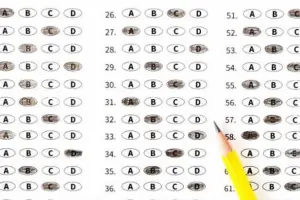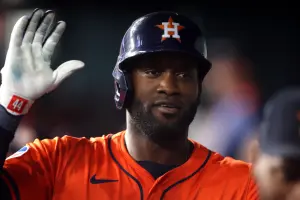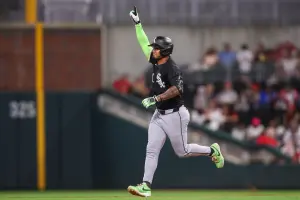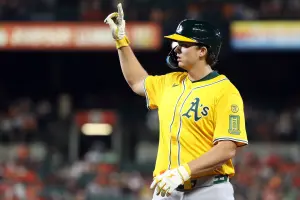
(*) MASTER NOTES: More lessons from big-league GMs
Last week, we presented eight lessons gleaned from Billy Beane's trade deadline approach. But he is not the only GM who did good work in July. Here are eight additional lessons we can take from the deadline actions of some other MLB GMs.
1. When selling, determine which assets you are selling, and which you are keeping... before you get into negotiations (GMs: Ben Cherington, Boston)
Ben Cherington swung four deadline-day deals. That type of flurry doesn't come together without significant pre-planning. But Cherington clearly wasn't in a willy-nilly "trade anything that isn't locked down" mode, either. Koji Uehara was a possible trade chip, but he was retained. Mike Napoli could conceivably have been made available (especially given the dearth of power on the market), and Boston's acquisition of Allen Craig could have made Napoli expendable. But Cherington drew a "hold/sell" line and stuck to it.
(It's also notable that Cherington executed his deadline-day trades in order of highest-return first: he dealt Lester, then Lackey, then Miller, then Drew. When time matters, take care of the big-ticket items first. There's a bonus lesson!)
2. Know your timeline to returning to contention, and target your acquisitions accordingly. (Cherington / Andrew Friedman, Tampa)
In our Beane discussion last week, we noted the differing types of packages that went to sellers: the Cubs focused on prospects with long-term potential; while the Red Sox brought back established, big-league-ready talent. Tampa skewed more toward the Boston end of that spectrum in acquiring Drew Smyly and Nick Franklin as their return for David Price. Particularly for a budget-conscious organization like Tampa, one key consideration is to try to get their young/cost-controlled talent to peak in the majors at the same time, forming the core of a contending team. Even if the Rays had been offered a Russell-for-Price deal by Oakland (and maybe they were), if Russell's timeline to emerging as one of those core contributors doesn't match the Rays' timeline, then that isn't a good fit for them.
3. Make certain that the player you are acquiring actually solves the problem at hand. (Jerry DiPoto, Los Angeles Angels)
DiPoto also followed one of the Beane lessons from last week, when he made multiple moves to address a single need (in the Angels' case, their bullpen). First he traded Ernesto Frieri for Jason Grilli, but Grilli proved to not be a sufficient fix for their bullpen back-end. DiPoto then added Joe Thatcher for matchup purposes, and then dropped the hammer on his bullpen problems by landing Huston Street. After that deal, DiPoto had left no doubt that he had fully resolved his team's biggest weakness, in fact turning it into a strength. (Just this week, he moved again, adding Vinnie Pestano in a post-waiver deal). The lesson: don't take half-measures. Once you identify a weakness to be addressed, address it fully and completely.
4. Worry about acquiring assets, not about making the pieces fit together neatly. (Cherington)
Adding Cespedes and Craig to an already-muddled OF/DH/1B mix in Boston didn't create any clarity about which pieces of that puzzle are part of Boston's 2015 plans, and which aren't. But Cherington didn't worry about that in July: April 2015 is a long way off, and there is an entire offseason ahead in which to shape this collection of sometimes-mismatched assets into a cohesive roster. For now, accumulating assets and creating strengths from which to spend this offseason is sufficient. In any rebuild, talent accumulation is the first step, and balancing can follow later on.
5. Target assets that are undervalued by their current organization. (Friedman)
Again, extrapolating from a Beane lesson ("Trust your process"), when you are secure in your own position and abilities, that allows you to prey upon those who are not as secure. In maximizing his return on Price, Friedman preyed on the job insecurity/desperation of Jack Zduriencik in Seattle. Zduriencik is making a big push for a playoff berth, and had an asset in Nick Franklin that had little value to the Mariners because of their extreme short-term focus. By targeting Franklin, Friedman capitalized on that perceived value gap: Franklin was more valuable to the Rays' longer-term objectives than the Mariners' near-term ones.
6. If you're in a favorite's position before making a move, you have the luxury to wait out the market and act last. (Dave Dombrowski, Detroit)
With his berth in the playoffs relatively secure, and with a roster that was mostly already-built for playoff success, Dave Dombrowski could afford to wait out the trade deadline and "let the other contenders chase him." It might have been coincidental, but it seems like more than just happenstance that the Tigers swooped in very late on deadline day to land Price, after Oakland had added Samardzija AND Lester. Only at that point, after the Lester deal early on deadline day, could Dombrowski have looked around and seen another AL team with a better rotation than his. With most of the deadline activity done at that point, he still had time to make one last assessment of his need for Price, and act accordingly.
7. Whenever possible, spend from your most abundant resource to fill your needs. (Brian Cashman, New York Yankees)
There have been mixed reviews as to the Yankees' deadline moves, but they followed their usual approach under Brian Cashman: they improved their roster, and in doing so spent more money than prospect capital. Their near-boundless financial resources make this a sound strategy; spending a resource that is less scarce to them. There is an allegory here for fantasy players: if you are contending and have room under your cap to take on salary, then the player you acquire doesn't have to return full value for their salary to be worthwhile. In fantasy terms, paying 20 budget dollars for one standings gained point doesn't make sense in a vacuum, but it may well make sense if that's the point that puts you over the top.
8. Standing pat is sometimes your best move. (Alex Anthopoulos, Toronto)
When you conduct a roster assessment and start identifying possible trade partners, there is no guarantee you will find a match. Maybe the holes you have don't line up with what is available on the market. Maybe you identify a target or two, but get outbid or just can't reach an agreement. In Toronto's case, several of their current problems are short-term ones that will resolve themselves as some of their injured players return. And if you are high enough on prospects like Marcus Stroman and Aaron Sanchez that you aren't willing to mortgage your future by trading them, then the resulting best move for your situation to sit back and tell your team that you believe in them as constituted, and stand pat. (Note that this last point does not apply to Ruben Amaro, Jr., Philadelphia)







